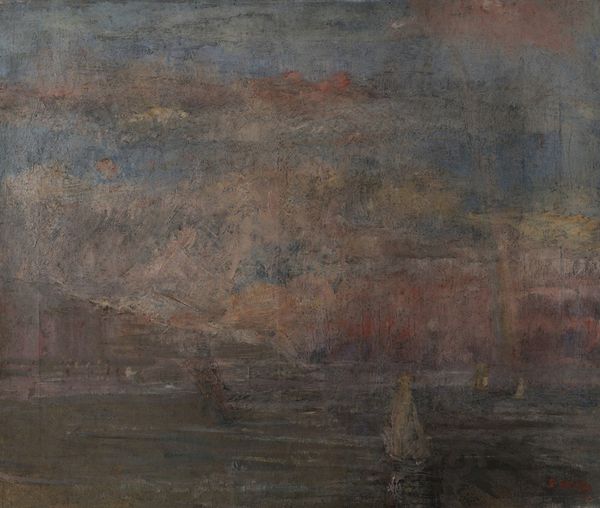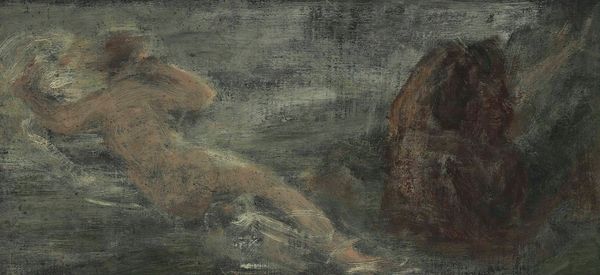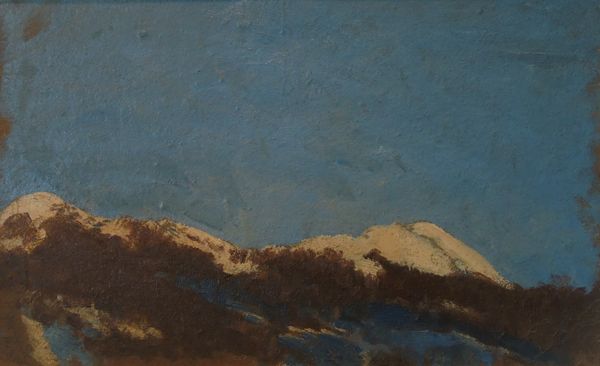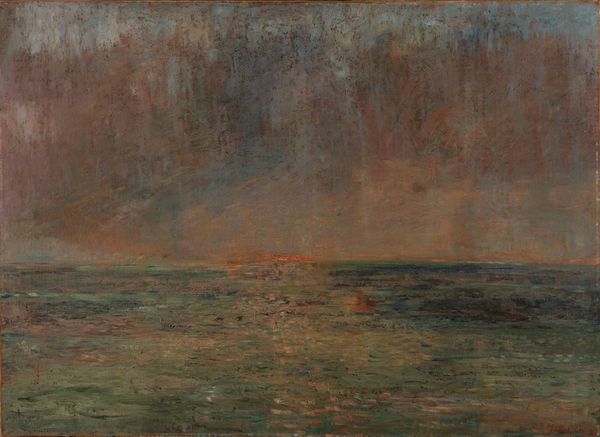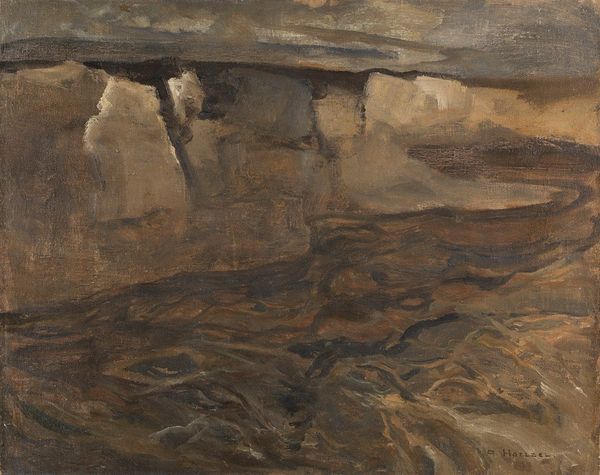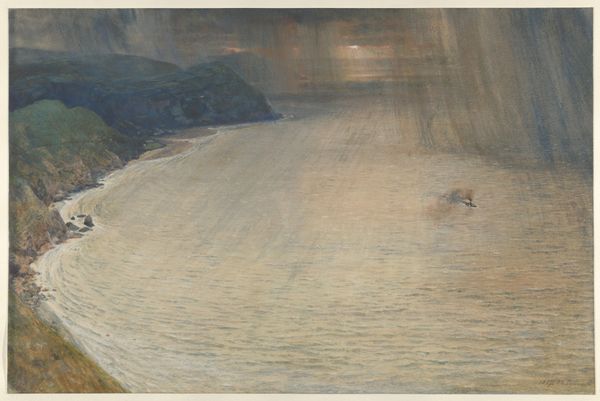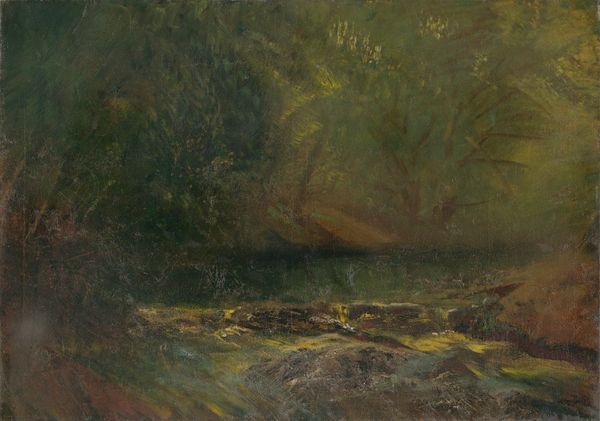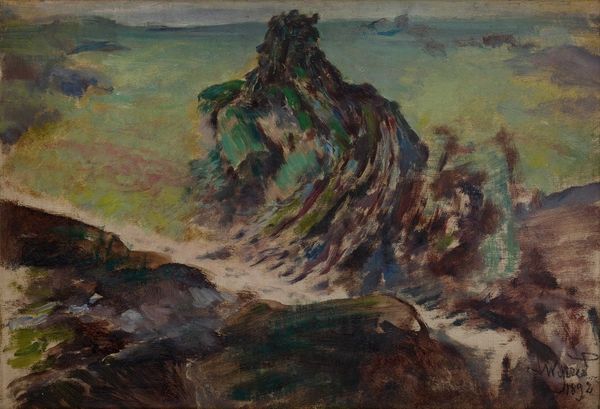
Copyright: Public Domain: Artvee
Curator: Wyczółkowski's "Czarny Staw," painted in 1906, depicts a mountain lake using oil on canvas, adopting the plein-air style of Impressionism. Editor: It strikes me as rather somber. The heavy use of dark hues seems almost suffocating. Curator: It is important to remember that landscapes aren't neutral spaces, particularly those created in Eastern Europe at the time. The painting might depict Czarny Staw—"Black Pond"—in the Tatra Mountains, but this wasn't merely a natural vista for the artist. It carries socio-political undertones. Consider the symbolic weight of representing this land during a period of Polish national identity seeking autonomy. Editor: Ah, that's where the romanticism tag comes in! While the socio-political dimension definitely gives a lens for considering why it evokes such emotion, my immediate reaction is also derived from the artwork’s inherent structures: how the subdued light hits the craggy cliffs and dances across the murky surface, dividing the canvas to amplify its depth and draw viewers in. Curator: It certainly begs the question, doesn't it, whether he aimed to capture the essence of the Polish soul, or even the political anxieties felt in that time of turmoil. Editor: Perhaps both are true, but I appreciate it simply as paint meeting canvas, a conversation between depth and dimension. It showcases an extraordinary range of values. Notice the textural difference between the jagged, reflected mountaintops against the unperturbed surface of the titular black pond. Curator: Well, beyond composition, consider Wyczółkowski's role within the Young Poland movement, a time in history in which artists sought to revive Polish national consciousness. Landscape wasn't simply topography; it was ideology, cultural assertion. The darkness that you mention evokes emotions of deep nationalism but in the context of occupied Poland could be interpreted as representing repression. Editor: Yes, but this lends additional meaning to the darkness too! Wyczółkowski transforms paint, composition, form, and even, importantly, emotion to do something more; layering them together such that we grapple, here today, with those inherent structures and feelings together. Curator: I think you've shown that to perceive the true artistry we need to look both at the artistic forms of the work and, also, the conditions from which the art comes from.
Comments
No comments
Be the first to comment and join the conversation on the ultimate creative platform.
